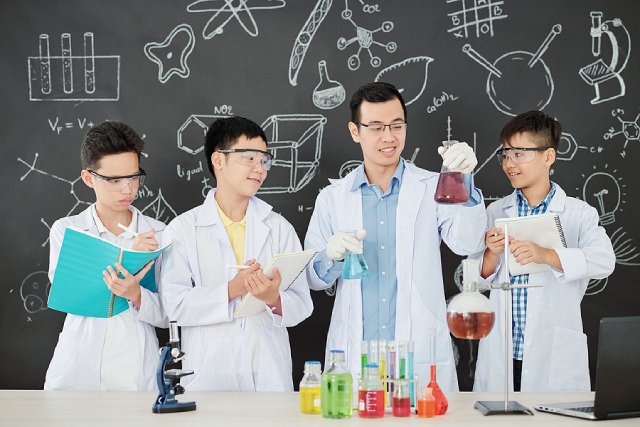How Some Elements Can Be Mixed To Form Common Compounds
In chemistry, a compound is any substance composed of indistinguishable molecules from atoms from two or more chemical elements. After all, everything within the universe is composed of atoms that make up more than a hundred different chemical elements, found in either pure form or combined as compounds.
One of the fundamental concepts of chemistry is that the atoms of different elements can bond to form chemical compounds. Sometimes, they combine to attain stability. For example, methane is made from one carbon atom and four hydrogen atoms, making it known as CH4 in chemical terms.
The compound formula hints at the elements it is made up of, with the number subscripts indicating the number of atoms. However, 1 is almost never written.
Compounds apply in everyday life
What makes compounds interesting is that they are in plain sight; we use them in our daily lives, making them an essential part of our growth and survival. For example, there are compounds in the food, drink and the air that we consume. Some examples include:
Water (H2O)
Almost no living thing can survive without water since it’s the reason we have organic life on our planet. Moreover, about 75% of Earth is made up of water. Water is also versatile in usages, such as drinking, cooking, cleaning, and agriculture. They give nutrients to the surroundings, allowing plants to get essential minerals. That is why it’s considered the most crucial compound in our life.
Because water is made of two hydrogen atoms and one oxygen atom, it’s possible to combine these elements to make water. However, it can be hazardous because hydrogen is flammable, and oxygen can make flames stronger.
Often, the reaction in creating water will end up in an explosion because the atoms for hydrogen and oxygen exist in pairs (H2 and O2), so they have to be heated to break them into single particles. When they bond together, it creates a lot of energy, and since the bonding happens rapidly, it can appear as an explosion. That is why it should be done in a controlled environment like the laboratory.
Salt (NaCl/Sodium Chloride)
Salt is a compound that consists of one sodium and one chlorine atom, bound to an ionic bond. Around 96-99% of table salt is NaCl in table salt, and the rest are impurities or other compounds mixed in it.
Sodium atoms form sodium metal, a soft, silvery-white metal that combusts in the air and reacts violently when put in water.
On the other hand, chlorine atoms form a yellow-green gas that corrodes most metals and is toxic to animals and plants. The reaction from both elements forms the white, crystalline sodium chloride made from sodium cations and anions.
However, one thing to note is that the physical and chemical properties exhibited by the compound are different from either of the elements. Chlorine is poisonous, but sodium is harmless and essential. Sodium reacts vigorously when put in water, while sodium chloride dissolves.
Despite all common household uses of salt, it can be used for de-icing, since it lowers the freezing point of water, preventing the water from turning it into ice.
Household items/Mouthwash (H2O2/Hydrogen Peroxide)
Currently, hydrogen peroxide is made via what is called the “anthraquinone process.” Compared to the possibility of forming water (H2O) through direct reaction, this method is more intense, requires large-scale production, and incidentally produces carbon dioxide (CO2) as a by-product. Using direct methods to form hydrogen peroxide may not work because it can result in the more stable compound, water (H2O).
As a practical, all-purpose disinfectant, hydrogen peroxide can be found in most households since it is an oxidising and cleaning agent. One of the more notable uses for hydrogen peroxide would be mouthwash, where the antiseptic solution can aid in lowering the antibacterial load in our oral cavity.
It also helps kill bacteria, soothe bleeding gums and sore throat, and can help whiten teeth.
How our everyday lives include chemistry as a whole
One thing to note is that compounds can show a bewildering array of characteristics. They can come in solid, liquid, or gas at normal temperatures and pressures. Moreover, the colour of the compounds can differ widely. Some compounds are toxic to humans, whereas others are essential for life.
It only takes one swap of a single atom within a compound that can change a substance's colour, odour, or toxicity. Because compounds are made up of at least two elements, they can likely react to other elements or compounds.
For example, sodium hypochlorite (NaOCl), also known as bleach, should never be mixed with ammonia (NH3), because it can result in forming chloramine (NH2Cl), a poisonous gas that can cause fatal results.
Conclusion
One of the topics taught in chemistry, whether pure or combined, is chemical reactions, where they would show you two compounds/elements, and you would have to write the end product. If any, you may have to write the by-products as well.
As mentioned above, some chemical reactions can be fatal, which means reading labels and studying chemistry go hand-in-hand to ensure that you stay safe. Even if the compound is just water, some compounds or elements can be water-reactive.
An example would be aluminum phosphide, which can be found in some pesticides. It should not be washed with water, because according to Centers for Disease Control and Prevention, the it can form phosphine (PH₃), a gas that causes fluid to accumulate in the lungs and cause cardiac arrest if breathed in.
Should your child be struggling in understanding chemical reactions, it’s recommended to sign them up for O level Pure Chemistry tuition in Singapore. As an established O level tuition centre, Glenn Lee provides provide personalised tuition and interactive teaching that can accommodate your child’s learning pace.
We make learning enjoyable, allowing students to grasp the concepts faster and encourage out-of-the-box thinking to improve problem-solving skills. Check our website or contact our number for more details.

